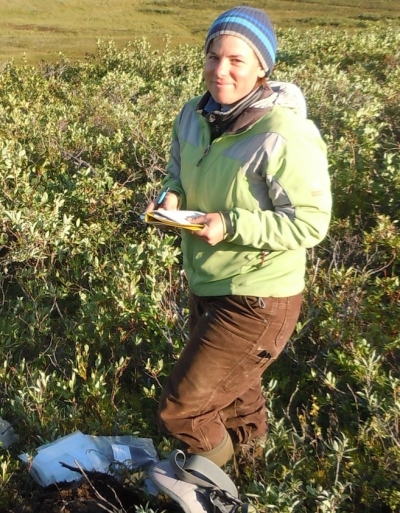By: Shelby Anderson, Assistant Professor, Portland State University
Introduction
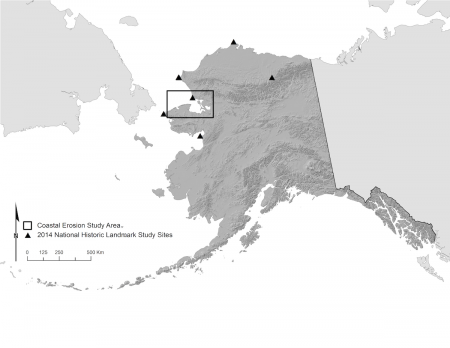
While the impacts of climate change on natural systems and contemporary northern communities are fairly well established, current and future climate change impacts on the archaeology of the north are not well understood. The general threat of climate change to Arctic archaeological sites is apparent (Blankholm 2009). Sea level rise, increased storm frequency, warming, and permafrost melting will increase rates of coastal archaeological site erosion across Arctic seacoasts. Warming, melting, and increased water run-off will similarly impact sites located in interior areas of the Arctic. At the same time climate change will continue to reveal new sites through erosive and warming forces. An example of this is the increase in alpine archaeological sites emerging from glacial ice patches as they melt (Reckin 2013). In jeopardy is an irreplaceable long-term record of Arctic life in the past. This record includes cultural and paleoenvironmental data on past human-environment interactions that provides important context for contemporary climate change issues (Hudson, et al. 2012; Rockman 2011). Not all archaeological sites can be saved, so how do archaeologists focus their efforts on the most threatened and important archaeological sites across vast Arctic spaces? This problem is the subject of two on-going collaborative research projects undertaken by Shelby Anderson, Portland State University (PSU), and colleagues Dael Devenport, Michael Holt, and Jeremy Karchut at the National Park Service (NPS).
Present Studies
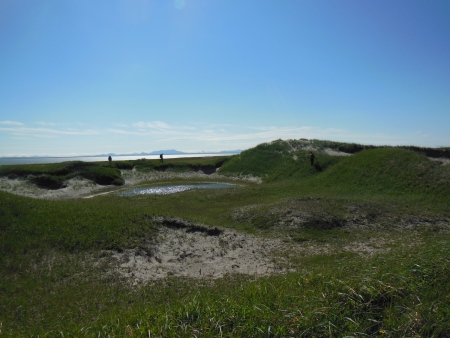
As part of the National Park Service (NPS) funded Climate Change and Archaeology in Northwest Alaska: Nuluk Study, Anderson and Holt are collaborating in an initial study of the impacts of climate change on coastal archaeological sites of northwest Alaska. The focus is on an approximately 56 km (35 mile) stretch of coastline along the northern Seward Peninsula and within the Bering Land Bridge National Preserve (see Figure 1). This region was selected for study because approximately two-thirds of the study area has never been investigated for archaeological sites. The rest of the study area was the subject of archaeological research more than 20 years ago; the sites have not been visited since and their current condition was unknown at the outset of the project. The coasts of northwest Alaska are considered highly vulnerable to future climate change impacts, with study of coastal erosion along the northern Seward Peninsula coast indicating erosion rates between 0.54 and 1.25 m/year (Jordan 1988; see also Manley, et al. 2007). The goals of the current study are to evaluate why and how people adapted to and altered their environment during past episodes of Arctic environmental variability and to evaluate how modern climate change is impacting archaeological sites in the study area. Two years of fieldwork are now complete and analysis of archaeological and climate change impact data are underway (see Figure 2). The survey identified 30 new sites and relocated 21 previously identified sites. More than half of these sites are moderately to severely damaged and there is significant loss of data in many cases (see Figures 3 and 4). The primary cause of site damage in the study area is wind erosion, with coastal erosion a secondary impact on site condition.
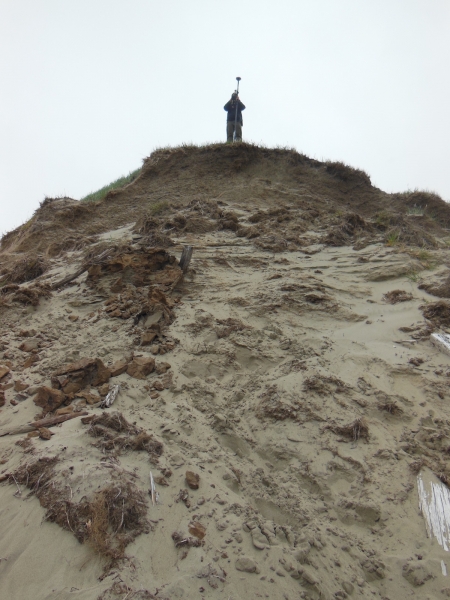
Karchut and Anderson are collaborating on a second NPS funded project, Northern Alaska National Historic Landmark Condition and Vulnerability Assessment, that involves developing methods for assessing climate change impacts to archaeological sites and determining site vulnerability to future climate change in a variety of northern geographic settings. This study builds on field methods implemented in the Nuluk study described above and expands climate change impact assessment to a range of geographic areas, including both coastal and interior sites. Six highly significant archaeological sites, all listed as National Historic Landmarks, will serve as study sites for testing climate change hazard and vulnerability assessment methods in summer 2014 (see Figure 1).
Future Work
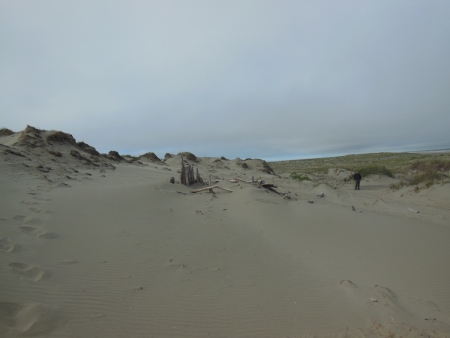
Next steps on these projects include refining field assessment methods with summer 2014 fieldwork and combining newly collected data with an ongoing NPS effort to develop a coastal vulnerability model for archaeological sites in northwest Alaska. Devenport and Karchut are using a Geographic Information System (GIS) platform to combine a model of future climate change impacts to coastal areas of northwest Alaska with a model that predicts archaeological site locations in previously uninvestigated areas. New survey data and the results of on the ground assessments described above will help refine this predictive model. The project GIS can then be used to prioritize specific northern coastal areas for future investigation that take into account both the likelihood of archaeological site presence and the predicted threat of climate change impacts in a given coastal area.
For further information about this project, contact Shelby Anderson (ashelby [at] pdx.edu). Additional information can also be found at: http://shelbylanderson.com/.
References
Blankholm, H.P. 2009. Long-Term Research and Cultural Resource Management Strategies in Light of Climate Change and Human Impact. Arctic Anthropology 46(1/2):17-24.
Hudson, M.J., M. Aoyama, K.C. Hoover and J. Uchiyama. 2012. Prospects and challenges for an archaeology of global climate change. Wiley Interdisciplinary Reviews: Climate Change 3(4):313-328.
Jordan, J.W. 1988. Erosion characteristics and retreat rates along the north coast of Seward Peninsula. The Bering Land Bridge National Preserve: an archaeological survey, edited by J. Schaaf, Vol. I. Anchorage, Alaska: National Park Service. pp. 322-362.
Manley, W.F., O.K. Mason, J.W. Jordan, D.M. Sanzone, E.G. Parrish and L.R. Lestak. 2007. Coastal Change since 1950 in the Southeast Chukchi Sea, Alaska, Based on GIS and Field Measurements. Paper presented at the Arctic Coastal Zones at Risk workshop in Tromso, Norway.
Reckin, R. 2013. Ice Patch Archaeology in Global Perspective: Archaeological Discoveries from Alpine Ice Patches Worldwide and Their Relationship with Paleoclimates. Journal of World Prehistory 26(4):323-385.
Rockman, M. 2011. The necessary roles of archaeology in climate change mitigation and adaptation. In Archaeology in Society: Its Relevance in the Modern World, edited by M. Rockman and J. Flatman, New York: Springer. pp. 193-215.
